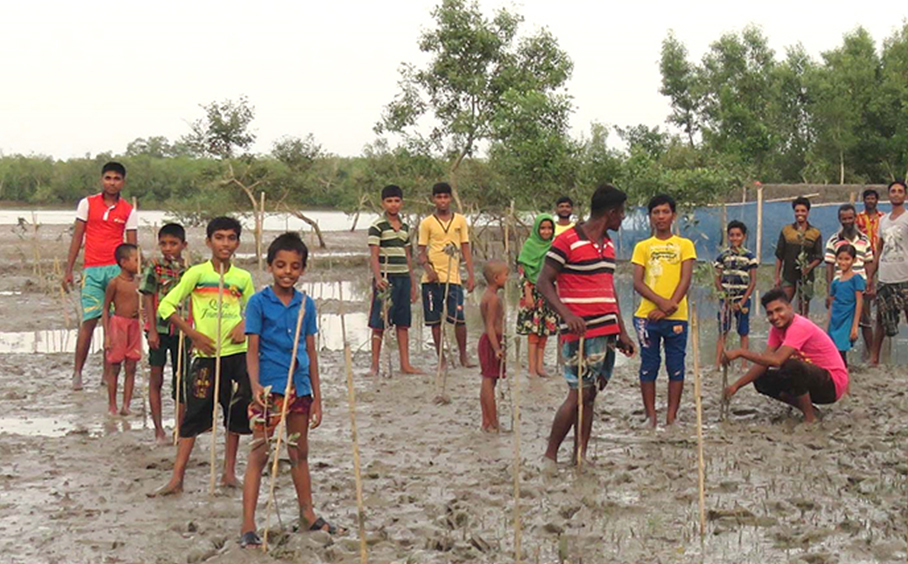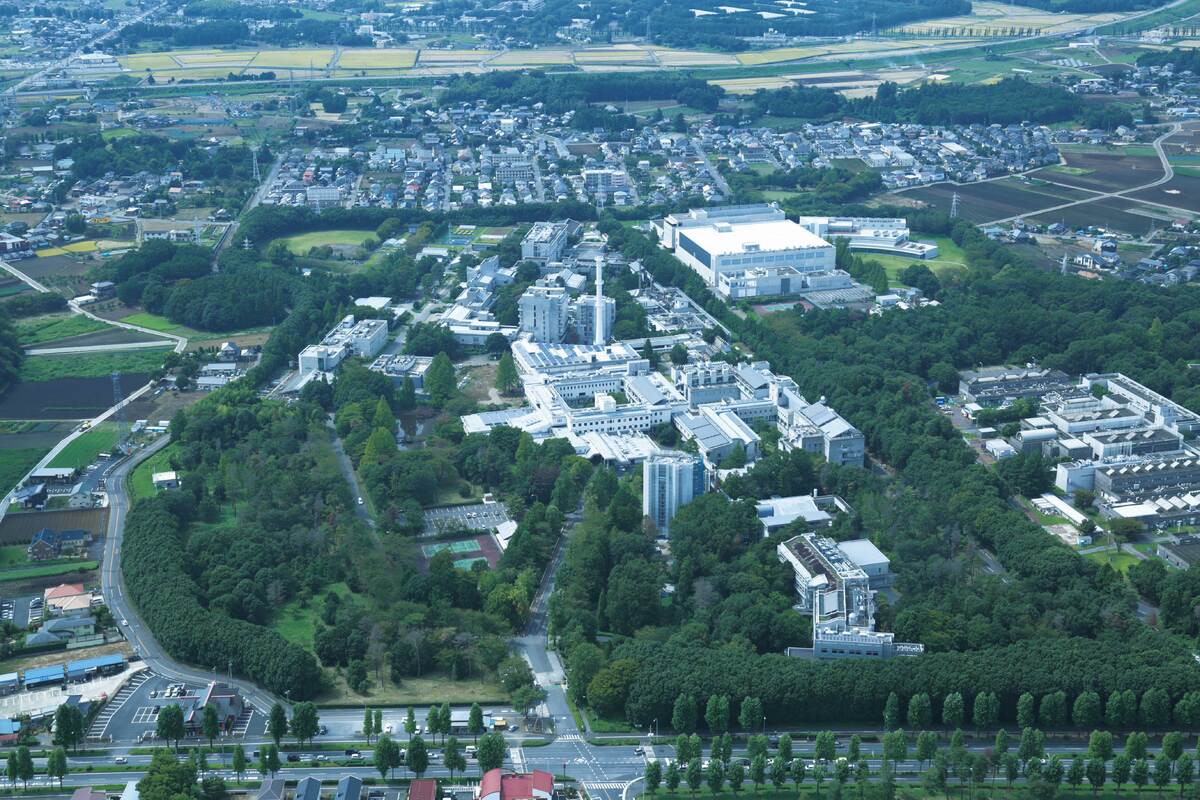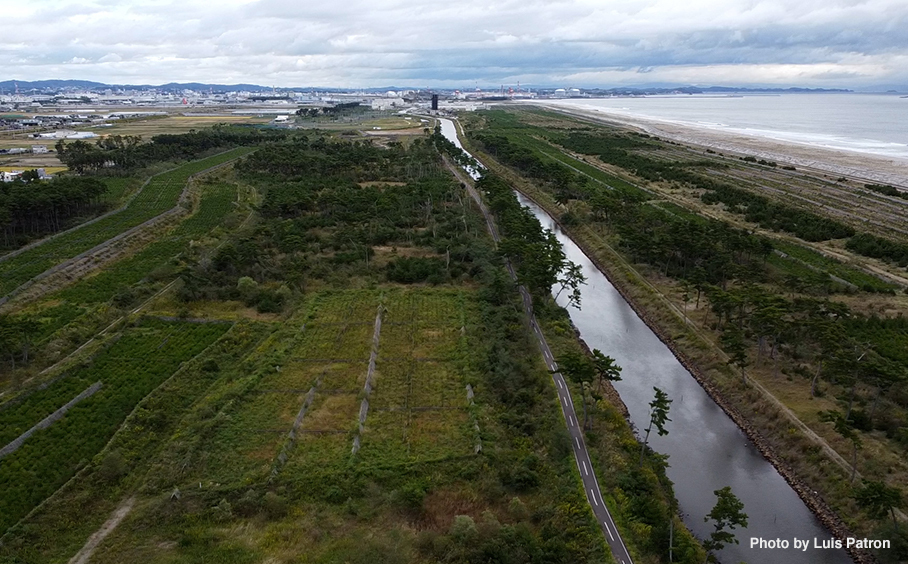
© Luis Patron
Issue
Coastal ecosystem restoration is likely to be undervalued in disaster recovery processes
Solution
Ecotones, transition zones that integrate a variety of vegetation in one zone, protect communities from coastal hazards and provide multiple benefits
Tsunami and power of nature
The coastal ecotone is defined as a transition zone that integrates shallow water, shoreline, dunes, reefs, coastal forests, waterways and canals, seawalls and roads, and agricultural land. The coastal ecotone that stretches across the Sendai Plain is a complex and unique landscape created through the process of destruction and revival by repeated floods and tsunamis over the past several centuries. For about 400 years, people living by the sea have been planting pine trees, digging waterways, and gradually adding to the natural environment to build a foundation for their lives. As a result, the coastal ecotone is a beautiful harmonious landscape where man-made structures have become part of nature.
The tsunami that followed the 2011 Great East Japan Earthquake destroyed many coastal ecosystems in the Northeast region of Japan. Minami-Gamou Monitoring Network, the researcher group started a vegetation survey at the ecotone in Shinhama 3 months after the tsunami. Interestingly, the ecosystems seemed to be recovering there. The pine grove in Shinhama’s coastal ecotone managed to survive. The once-devastated ecotone of Shinhama was rapidly regaining its original beauty, with wildlife and habitats recovering autonomously, faster, and more expansively than predicted. However, they were concerned that the new seawall development plan would eliminate ecotones. Local people were not initially aware of the importance of ecosystem restoration and rather desired the seawall would be constructed soon. The researchers faced the dilemma: saving lives versus ecosystem conservation.
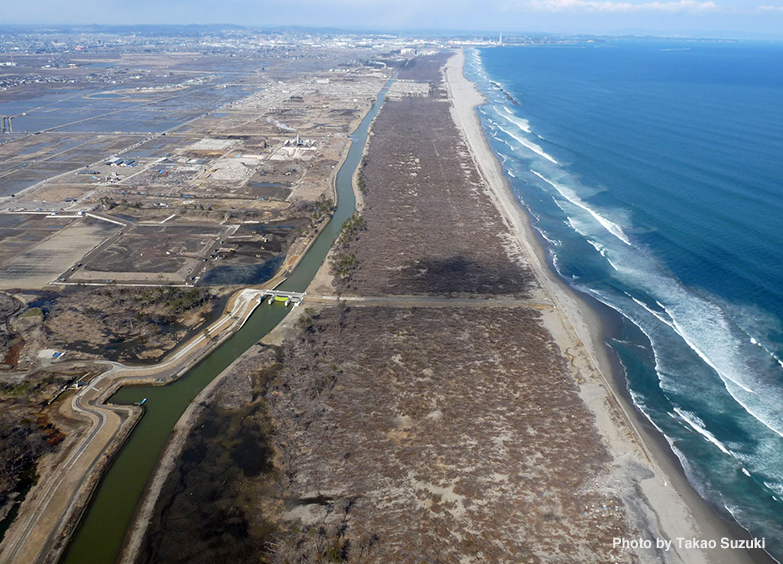
A collective endeavor for ecotone restoration
After a painstaking discussion with the government, they successfully achieved the pilot monitoring site of ecotone in Shinhama. For example, prior to the construction of the base embankment, they had an experimental area, where they were able to continue vegetation surveys. This required the construction of a partial bend in the seawall to preserve the ecotone site. Consideration was also given to the construction of coastal embankments to restore the coastal forest, which is full of diverse local species and ecosystem services.
In addition, researchers informed local people of the importance of the coastal ecosystem. Thanks to their engagement, local people came to realize the ecological, cultural, and historical values of their local ecosystems and began to support the coastal ecotone. Then, they started the locally-led activities to learn more by themselves and disseminate the value of nature to the general public. Their collective voice prompted the government to realize the ecotone project in Shinhama. Likewise, the local government officers greatly supported the activities led by local people, and their attitude gave a good impression to local people.
Harmony of green and gray infrastructures
Today, the ecotone in Shinahama exists in harmony with gray infrastructures. The various ecosystems in the ecotone perform a variety of benefits for the local communities such as tide and sand control, tsunami and flood mitigation, water purification, supply of fuel and fertilizer such as firewood and fallen leaves, and creation of a beautiful landscape. The ecotone forms sand dunes, forests, and wetlands that absorb the impact of coastal hazards such as tsunami and storm surges and break stormy wind. It plays an important role in protecting farmland and residential areas from disasters. The seawall in front was set back so that the ecotone could be left as is, and the man-made embankments supplemented the ecotone’s DRR effect. This mixture of green and grey in Shinhama poses a new recovery model that incorporates nature wisely rather than uniformly build man-made structures so that people can continue to receive the ecosystem services.
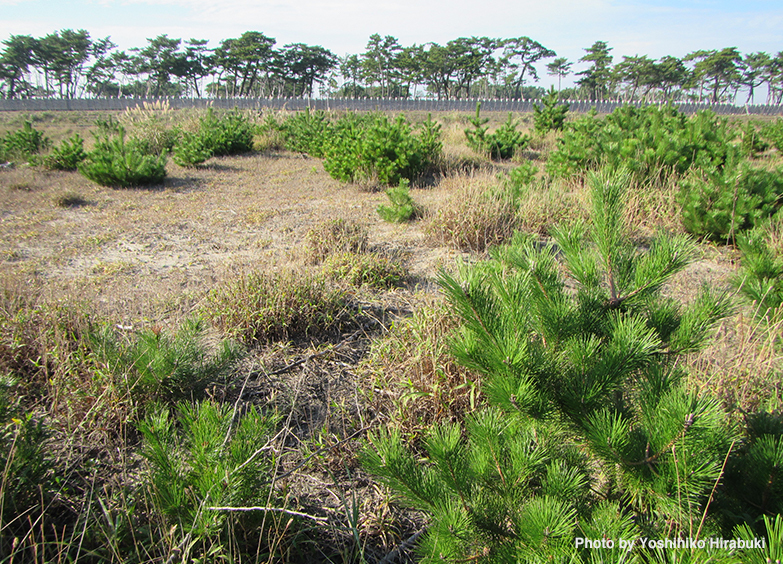
A collective endeavor for ecotone restoration
After a painstaking discussion with the government, they successfully achieved the pilot monitoring site of ecotone in Shinhama. For example, prior to the construction of the base embankment, they had an experimental area, where they were able to continue vegetation surveys. This required the construction of a partial bend in the seawall to preserve the ecotone site. Consideration was also given to the construction of coastal embankments to restore the coastal forest, which is full of diverse local species and ecosystem services.
In addition, researchers informed local people of the importance of the coastal ecosystem. Thanks to their engagement, local people came to realize the ecological, cultural, and historical values of their local ecosystems and began to support the coastal ecotone. Then, they started the locally-led activities to learn more by themselves and disseminate the value of nature to the general public. Their collective voice prompted the government to realize the ecotone project in Shinhama. Likewise, the local government officers greatly supported the activities led by local people, and their attitude gave a good impression to local people.
Harmony of green and gray infrastructures
Today, the ecotone in Shinahama exists in harmony with gray infrastructures. The various ecosystems in the ecotone perform a variety of benefits for the local communities such as tide and sand control, tsunami and flood mitigation, water purification, supply of fuel and fertilizer such as firewood and fallen leaves, and creation of a beautiful landscape. The ecotone forms sand dunes, forests, and wetlands that absorb the impact of coastal hazards such as tsunami and storm surges and break stormy wind. It plays an important role in protecting farmland and residential areas from disasters. The seawall in front was set back so that the ecotone could be left as is, and the man-made embankments supplemented the ecotone’s DRR effect. This mixture of green and grey in Shinhama poses a new recovery model that incorporates nature wisely rather than uniformly build man-made structures so that people can continue to receive the ecosystem services.
Location
Related Information
- Hirabuki, Y. (2014) Vegetation response and resilience at a severely disturbed sand-dune coastal ecotone, Minami-Gamou monitoring site. Japanese Journal of Conservation Ecology. 19 : 159-161.

